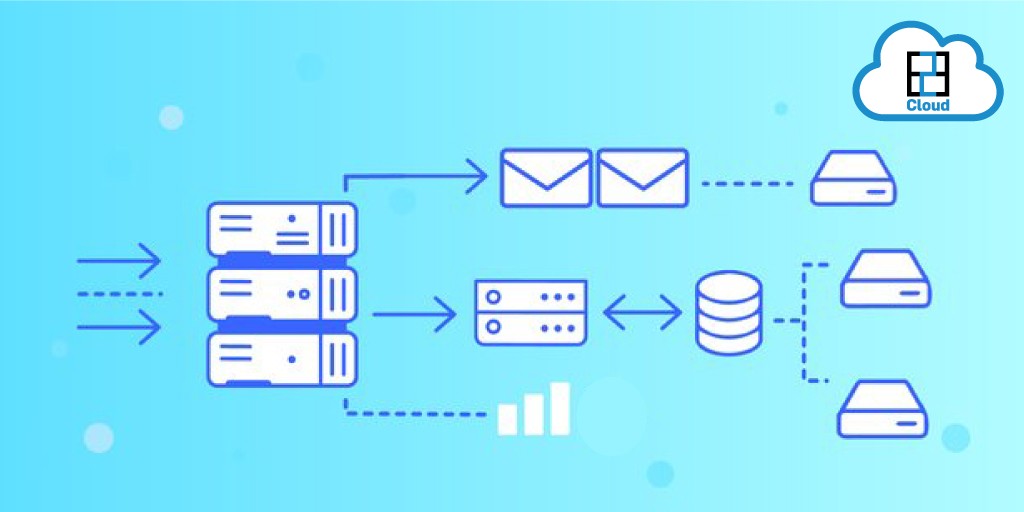How DePIN Networks Enhance Blockchain Scalability. Blockchain technology has revolutionized the way we think about digital transactions, offering a decentralized and secure method of managing data and transferring value. However, as blockchain adoption grows, so does the need for scalability. Scalability is crucial for ensuring that blockchain networks can handle increasing amounts of data and transactions without compromising on performance or security. This is where Decentralized Physical Infrastructure Networks (DePIN) come into play. DePIN networks are designed to enhance the scalability of blockchain systems, making them more efficient and capable of supporting widespread use.
What Are DePIN Networks?
Definition of DePIN Networks
DePIN networks are decentralized systems that leverage physical infrastructure to enhance blockchain capabilities. Unlike traditional blockchain solutions that rely solely on digital resources, DePIN networks integrate physical components, such as storage devices and processing units, into the blockchain ecosystem. This integration allows for more efficient data management and processing, leading to improved scalability.
Key Features and Components
DePIN networks consist of several key components:
- Efficient Consensus Mechanisms: Advanced consensus algorithms that ensure data integrity and security.
- Sharding and Parallel Processing: Techniques that divide the blockchain into smaller, manageable pieces.
- Layer 2 Solutions: Secondary frameworks built on top of the primary blockchain to enhance its capabilities.
These components work together to create a more scalable and efficient blockchain network.
How DePIN Networks Differ from Traditional Blockchain Solutions
Traditional blockchain solutions rely on a single, monolithic structure to manage all transactions and data. This approach often leads to bottlenecks and performance issues as the network grows. In contrast, DePIN networks distribute the workload across multiple physical and digital resources, allowing for greater flexibility and scalability.
The Scalability Challenge in Blockchain
Explanation of the Scalability Trilemma: Security, Decentralization, Scalability
The scalability trilemma is a concept that highlights the challenge of achieving three key attributes in a blockchain network simultaneously: security, decentralization, and scalability. Most blockchain networks can excel in two of these areas but often struggle to achieve all three. For example, a highly secure and decentralized network may suffer from scalability issues, while a scalable network may compromise on security or decentralization.
Common Scalability Issues Faced by Blockchain Networks
Scalability issues in blockchain networks manifest in several ways:
- High Transaction Fees: As the network becomes congested, transaction fees increase, making it expensive to use.
- Slow Transaction Processing: Increased demand can lead to slower transaction confirmation times.
- Limited Throughput: Traditional blockchains have a limited capacity for processing transactions per second, hindering their ability to support large-scale applications.
Examples of Blockchains Struggling with Scalability
- Bitcoin: Known for its robust security and decentralization, Bitcoin often experiences high transaction fees and slow processing times during peak usage.
- Ethereum: Despite its versatility and wide adoption, Ethereum has faced scalability challenges, leading to high gas fees and congestion during popular events like token launches.
Boost your digital security and privacy with SRP Coin, offering great rewards for staking. Start protecting your digital assets now!
How DePIN Networks Enhance Scalability
Description of Decentralized Storage in DePIN
DePIN networks utilize decentralized storage solutions, where data is stored across multiple physical devices rather than a single central server. This distribution of data enhances the network’s ability to handle large volumes of information efficiently.
Benefits of Distributed Storage for Scalability
Distributed storage offers several benefits for scalability:
- Redundancy: Data is replicated across multiple nodes, ensuring availability even if some nodes fail.
- Load Balancing: The workload is distributed evenly, preventing any single node from becoming a bottleneck.
- Scalability: Additional storage can be added easily as the network grows, accommodating increasing data volumes.
Efficient Consensus Mechanisms
Overview of Consensus Mechanisms Used in DePIN
DePIN networks employ advanced consensus mechanisms, such as Proof of Stake (PoS) and Practical Byzantine Fault Tolerance (PBFT), to validate transactions and maintain data integrity.
How These Mechanisms Improve Scalability
Efficient consensus mechanisms enhance scalability by:
- Reducing Computational Load: Unlike Proof of Work (PoW), PoS and PBFT require less computational power, allowing for faster transaction processing.
- Improving Energy Efficiency: Reduced computational requirements lead to lower energy consumption, making the network more sustainable.
Sharding and Parallel Processing
Explanation of Sharding in Blockchain
Sharding is a technique that divides the blockchain into smaller, manageable segments called shards. Each shard operates independently, processing a subset of the network’s transactions and data.
Role of DePIN in Facilitating Sharding and Parallel Processing
DePIN networks facilitate sharding and parallel processing by providing the necessary infrastructure to support multiple shards. This approach allows for:
- Increased Throughput: Multiple shards can process transactions simultaneously, significantly increasing the network’s capacity.
- Improved Efficiency: Parallel processing reduces the workload on individual nodes, enhancing overall network performance.
- Scalability: Shards can be added or removed as needed, allowing the network to scale dynamically.
Layer 2 Solutions Integration
Introduction to Layer 2 Solutions
Layer 2 solutions are secondary frameworks built on top of the primary blockchain to enhance its capabilities. These solutions include technologies like state channels, sidechains, and rollups.
How DePIN Networks Integrate and Enhance Layer 2 Solutions
DePIN networks integrate Layer 2 solutions to further improve scalability by:
- Reducing On-Chain Transactions: Layer 2 solutions handle transactions off-chain, reducing the load on the primary blockchain.
- Increasing Speed: Off-chain transactions can be processed more quickly, improving user experience.
- Enhancing Scalability: By offloading transactions to Layer 2, the primary blockchain can focus on maintaining security and decentralization.
Case Studies: DePIN Networks in Action
Real-World Examples of DePIN Networks Improving Scalability
Several blockchain projects have successfully implemented DePIN networks to enhance scalability:
- Filecoin: Utilizes decentralized storage to manage large volumes of data efficiently.
- Polkadot: Employs sharding and parallel processing to increase throughput and scalability.
- Arweave: Focuses on long-term data storage through a decentralized network.
Benefits of Enhanced Scalability with DePIN Networks
Increased Transaction Throughput
DePIN networks significantly increase transaction throughput by distributing the workload across multiple nodes and shards. This approach allows for faster and more efficient transaction processing, supporting large-scale applications and user bases.
Reduced Latency and Transaction Fees
By improving network efficiency and reducing congestion, DePIN networks lower latency and transaction fees. This makes blockchain applications more accessible and cost-effective for users.
Enhanced User Experience and Adoption
Improved scalability leads to a better user experience, as transactions are processed quickly and reliably. This enhances the appeal of blockchain applications, driving greater adoption and use.
Challenges and Considerations
Potential Challenges in Implementing DePIN Networks
While DePIN networks offer numerous benefits, there are potential challenges to consider:
- Technical Complexity: Implementing and maintaining DePIN networks requires advanced technical expertise.
- Security Risks: Ensuring the security of decentralized physical infrastructure can be challenging, as it introduces additional attack vectors.
- Regulatory Compliance: Navigating regulatory requirements for decentralized networks may be complex and vary by jurisdiction.
Considerations for Developers and Network Participants
Developers and network participants should consider the following when working with DePIN networks:
- Infrastructure Costs: Building and maintaining decentralized physical infrastructure can be costly.
- Network Governance: Effective governance mechanisms are needed to manage and coordinate the network.
- User Education: Educating users about the benefits and operation of DePIN networks is crucial for widespread adoption.
Future Developments and Research in DePIN Scalability
Future Trends in DePIN Networks
Several trends are likely to shape the future of DePIN networks:
- Increased Integration: DePIN networks will likely see greater integration with existing blockchain platforms and applications.
- Advancements in Consensus Mechanisms: Ongoing research will lead to the development of more efficient and secure consensus algorithms.
- Expansion of Use Cases: As DePIN networks mature, new use cases and applications will emerge, driving further innovation and adoption.
Ongoing Research and Development
Researchers and developers are continually exploring new ways to enhance the scalability of DePIN networks. This includes investigating advanced sharding techniques, optimizing Layer 2 solutions, and improving the integration of decentralized storage.
Conclusion
DePIN networks represent a promising solution to the scalability challenges faced by traditional blockchain systems. By leveraging decentralized physical infrastructure, efficient consensus mechanisms, sharding, and Layer 2 solutions, DePIN networks can significantly enhance the scalability, efficiency, and performance of blockchain applications. As the technology continues to evolve, DePIN networks will play a crucial role in driving the widespread adoption and success of blockchain technology. As we look towards a more scalable and efficient future for blockchain, it’s essential to explore the potential of DePIN technology. Whether you’re a developer, investor, or enthusiast, now is the time to delve into the world of DePIN networks and discover how they can transform the blockchain landscape.

 China
China Russia
Russia India
India









